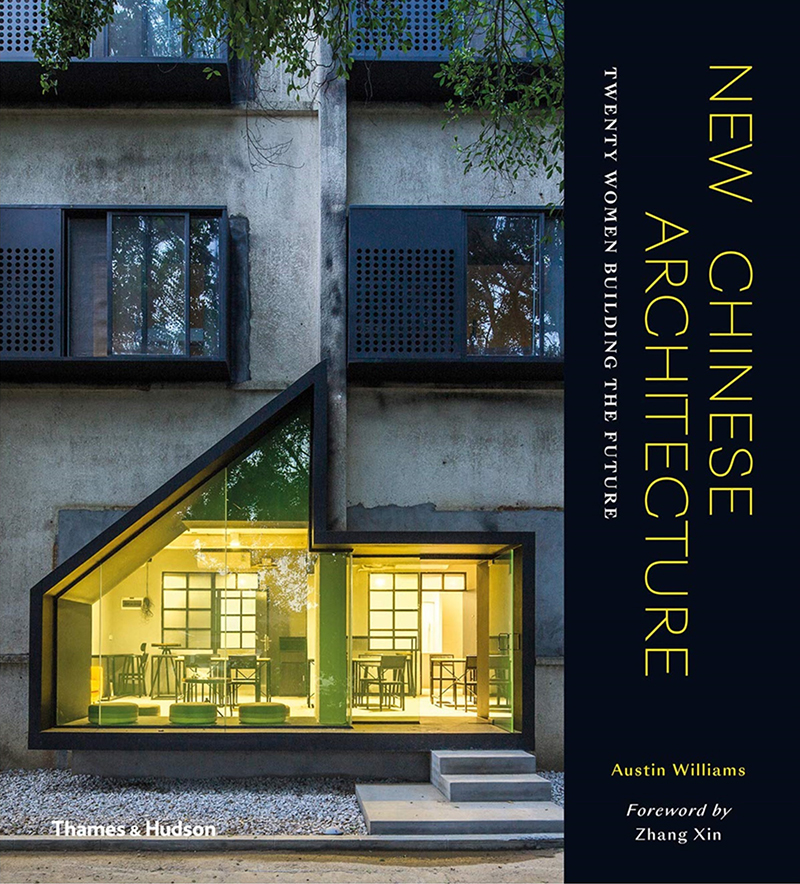New Chinese Architecture
New Chinese Architecture: Twenty Women Building the Future
Austin Williams, Zhang Xin (Foreword)
Thames & Hudson, May 2019

Hardcover | 9 x 9-3/4 inches | 256 pages | 370+ illustrations | English | ISBN: 978-0500343388 | $45.00
Publisher Description:




Author Bio:
(Note: Books bought via these links send a few cents to this blog, keeping it afloat.)




Austin Williams, Zhang Xin (Foreword)
Thames & Hudson, May 2019

Hardcover | 9 x 9-3/4 inches | 256 pages | 370+ illustrations | English | ISBN: 978-0500343388 | $45.00
Publisher Description:
Over the past decade, China’s new generation of female architects have proven themselves to be talented, confident, innovative, and successful on the world stage. Engaging with traditions and international trends, as well as posing entirely new architectural ideas, their projects reveal China to be a place full of creative possibility.dDAB Commentary:
This book explores the work of twenty leading female architects living and working in China today. Together they represent a mix of creative talents who are having a significant influence on the national scene. Featuring detailed profiles of each architect, this book showcases over fifty of their key projects across China, from small- to large-scale, residential to commercial, and urban to rural developments, many never before published. With a foreword by business magnate Zhang Xin, one of China’s most celebrated female entrepreneurs, New Chinese Architecture offers unique insights into how architects are adapting and responding to the rapidly evolving social and political changes impacting life in the most populous country on Earth.
Though not Chinese, one woman is missing from this book of "women building the future" in China: Zaha Hadid. She designed no less than six buildings for China, four of them (Guangzhou Opera House, Galaxy SOHO and Sky SOHO, and Jockey Club Innovation Tower) completed before she died in 2016. Hadid's impact on China was great in her lifetime and continues now and into the future, as projects she designed are realized posthumously. Hadid was actually supposed to write the foreword for New Chinese Architecture, which points to her importance for women architects in China and to the years that Austin Williams and his team put into researching and documenting the work of twenty of them. Although, in the words of Eva Jiřičná, who is quoted in the book's introduction, the greatest tribute to Hadid would be to "eliminate the practice of talking about female architects" (my emphasis), the book's focus on women architects (happenstance, per the author) draws attention to firms that don't get as much press or recognition as others, and to women that are overshadowed by their male peers.Spreads:
The twenty architects are presented in alphabetical order (from Di Shaohua to Zhao Zhao) with "articles taken from interviews" and documentation of two or more projects. The articles trace the architects' paths toward architecture and heading their own firms, and discuss their points of view on architecture and design. The profile I flipped to first upon receiving the book was Lu Wenyu's, known to most people as the other half of Wang Shu's Amateur Architecture Studio. A pull quote — "I prefer privacy" — illuminates how she was fine with not being acknowledged by the Pritzker Prize jury; Wang Shu, also her husband, has lost his privacy since the Pritzker in 2012. Though only a couple pages of text is provided, it's great to read about her past and her contributions to the joint practice. The same thing can be said about the other 19 architects in this important collection of impressive buildings.




Author Bio:
Austin Williams is a senior lecturer in professional practice at the Kingston School of Art, London and an honorary research fellow at XJTLU in China. He is the director of the Future Cities Project, and the China correspondent for the Architectural Review.Purchase Links:
(Note: Books bought via these links send a few cents to this blog, keeping it afloat.)



